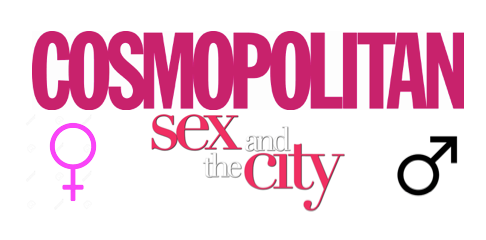Women’s media is written by women but seems to be oriented around men

May 8, 2018
Women’s magazines are somewhat deceptive because they attempt to trick women into making them feel bad about looking a certain way. In reality, some of these magazines were started so that women could have a place to air the way they felt about the world around them, to have a place to really express the true nature of sexuality and promiscuity, and to encourage women to have a place in society that is equal to that of men.
However, this is not the case anymore as many women’s magazines are aimed at how a women can be appealing to a man. One thing that shows this is the essay, “Wax Dolls: The troubling divide between “sex positive” and true confidence”. One point that really drives home this concept is the idea of how a women’s style is oriented around what appeals to the male fantasy.
One prime example of this comes from the essay’s description of the party uniforms. It talks about how the skimpy clothing and high heels are similar to something that might be seen in Cosmopolitan magazine, which is a crucial leader in a portion of the magazine industry that centers on what makes men happy.
Think about that, people aspire to promiscuity; at least that’s what most magazine’s like Cosmopolitan tell us. Helen Gurley Brown, the woman responsible for putting promiscuity as well as Cosmopolitan magazine on the map, wasn’t afraid of it. She was more than willing to let her readers know that she had sex and it was okay for them to have sex as well.
This magazine originally started out championing women to explore their sexuality. However, it was more or less telling women what would make them desirable to the opposite sex. In the book, Popular Culture as Everyday Life, the chapter “Having Sex” brings up this magazine. Though, it is really being shown in a negative light because instead of focusing on women’s sexual pleasures, and desires; it really teaches how and what women can do to please men.
Many of the women interviewed in this chapter describe this as The Cosmo Effect and show how they are unsatisfied with themselves just by breezing through the pages of this magazine. Another aspect of media that influences the social construction of sexuality is pornography. Through pornography, the sexual script has changed because of the way that the use of pornography has changed.
Before the Internet, pornography was used to have an orgasm. However, with the easy access to pornography through the Internet it is used as a stimulant for sex. Some youth learn about sex through pornography and it gives them a false ideal of what is sexually desirable.
One show that was built around the idea of changing this is the sitcom, Just Shoot Me!. The show is about a journalist, Maya Gallo, who gets fired from her job at a television news show after making the anchorwoman cry on the air. She soon finds herself unable to get a job because of this stunt, and swallows her pride and goes to work for her father’s fashion magazine, Blush.
The magazine is similar to Cosmopolitan in that the magazine uses the articles to denigrate women. The question of whether the magazine denigrates women through fashion is explored as a primary point of the series, but was the focal point of the season two episode, Amblushed and the season three episode, Blinded by the Right.
Amblushed starts with Maya buying the newest issue of Blush to find that her father, Jack, changed the headline of an article she titled, “The Lost Art of Listening”, to “Shut Up and Maybe He’ll Love You”. To defuse the situation, her father decides to send her, in his place, to what she believes is a celebration of women and media. It actually turns out to be a debate about why Blush magazine denigrates women, which Maya tries to defend, but to no avail.
In the episode, Blinded by the Right, the character Nina van Horn, gives an argument for why the smutty covers of Blush should be allowed to remain on the shelves of a grocery store chain. She says, “The covers of Blush are sometimes lurid and even pornographic but they serve a vital purpose. They make women lonely. Blush lures women with sexy headlines but then sets impossible standards for them to measure up to. Perky boobs, studly boyfriends, multiple orgasms; most women will never have any of these things”. She uses this line to make the argument that the grocery store needs the magazine to make women want food.
Another women’s based media that seems to be written around men is the iconic HBO series, Sex and the City. This show was more or less based on the idea that unless a person is married or isn’t single for the rest of their life, they will be happy. Throughout the show, people condemn the character of Samantha Jones for her promiscuity when that should be viewed as something that is what many people might be able to relate to.
In some honesty, she is a role model because she actually let love find her and wasn’t on some quest for love. Now, the show is much different from the book, written by Candace Bushnell. Originally, Carrie and Mr. Big weren’t supposed to end up together as the book ends with Mr. Big being happily married to someone else and Carrie is happily single. This ending is somewhat more realistic than what viewers got.
Plenty of media that is made for women or by women usually connotes that they may not be good enough unless they are married or that they should be well versed in how to please a man. There are very few shows or media that end where the main character ends up better off ever after. Media hasn’t been kind to women but hopefully soon, there will be media about the reality of women and how being happy comes from what a person wants out of their life.




